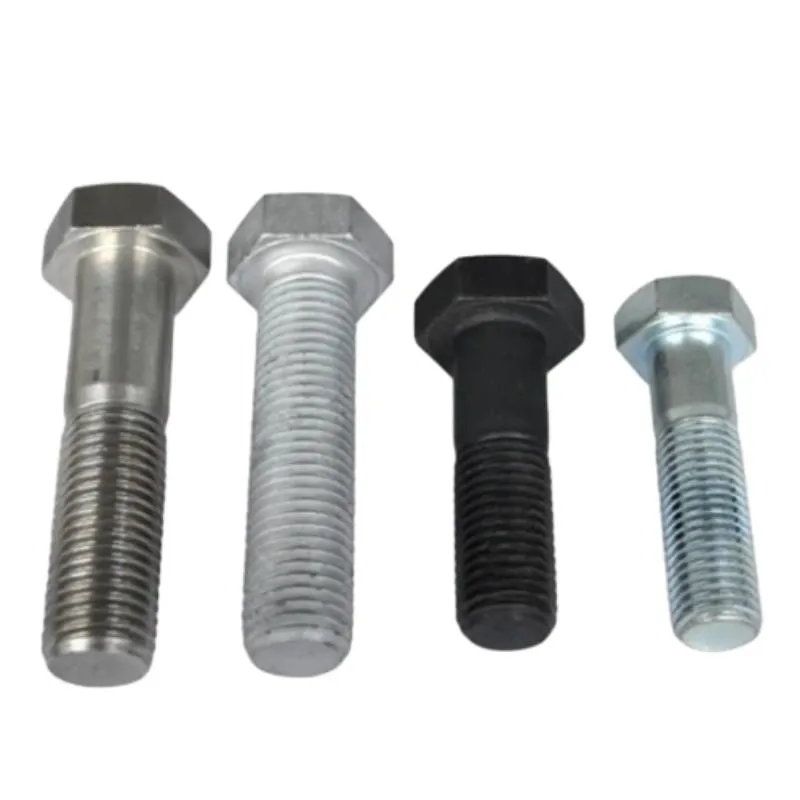Dec . 30, 2024 20:35 Back to list
Guide to Choosing the Right Sizes for Metal Washers in Various Applications
Understanding Metal Washer Sizes A Comprehensive Guide
Washers are essential components widely used in various applications, from construction to manufacturing, automotive to electronics. Despite their simplicity, their role in distributing load, reducing wear, and preventing leakage cannot be overstated. A key aspect of washers is their size, which can greatly affect their performance. In this article, we will explore metal washer sizes, the various types available, and how to choose the right washer for your needs.
What Are Metal Washers?
Metal washers are flat discs usually made of steel, stainless steel, brass, or aluminum. They are typically placed under nuts, bolts, and screws to prevent them from loosening or sinking into the material. Washers serve several purposes, including load distribution, vibration damping, and serving as a spacer. There are different types of washers available, each designed for specific applications.
Common Types of Metal Washers
1. Flat Washers These are the most common type of washer and are used to distribute the load of a fastener. They come in various sizes, with diameter specifications that correspond to the size of the bolt or screw they accompany.
2. Lock Washers Designed to prevent loosening under vibration, lock washers come in various shapes, such as split, tooth, and wave. They ensure that fasteners remain secure, especially in high-vibration environments.
3. Fender Washers With a larger outer diameter than standard flat washers, fender washers provide added surface area, making them ideal for securing fasteners in thin or soft materials.
4. Countersunk Washers These washers feature a bevel on one side, allowing them to sit flush with the material surface, reducing the risk of snagging or damaging surrounding materials.
5. Sealing Washers Often used in plumbing and automotive applications, sealing washers have a rubber or elastomeric material bonded to the washer, providing a seal to prevent leaks.
Understanding Washer Sizes
metal washer sizes

When it comes to selecting the right metal washer, size is crucial. The primary dimensions to consider are the inner diameter (ID), outer diameter (OD), and thickness.
- Inner Diameter (ID) This is the diameter of the hole in the center of the washer. It must match the diameter of the bolt or screw for proper fitment. - Outer Diameter (OD) This is the total diameter of the washer itself. A larger OD can distribute the load better over a surface. - Thickness The thickness of the washer contributes to its strength and load-bearing capacity. Thicker washers can withstand greater loads but may not fit in tighter spaces.
Choosing the Right Washer Size
To select the appropriate washer size, follow these steps
1. Determine the Fastener Size Measure the diameter of the bolt or screw. This will help you identify the necessary ID for the washer.
2. Consider the Material Select a washer material that matches the application environment. For example, stainless steel is suitable for outdoor or corrosive environments, while brass may be used for electrical connections.
3. Assess the Load Requirements Evaluate the type of load the washer will be subjected to. High-load applications may require thicker or larger OD washers to distribute pressure effectively.
4. Check Industry Standards There are industry standards for washer sizes, such as ANSI and ISO, which provide specifications for metric and imperial dimensions. Referencing these can help ensure the correct size is selected.
5. Application-Specific Needs Consider any additional requirements your application might have, such as vibration resistance or water sealing, which could influence your choice of washer type and size.
Conclusion
Understanding metal washer sizes is vital for ensuring the effectiveness of your fasteners and the integrity of your assemblies. By taking the time to select the right size and type of washer, you can mitigate issues related to loosening, wear, and damage in your projects. Whether you are a seasoned professional or a DIY enthusiast, knowledge of washer sizes will enhance your ability to make informed choices and improve the durability of your work.
-
The Ubiquitous Reach of DIN934 in Application Realms
NewsMay.16,2025
-
Exploring Different Bolt Types
NewsMay.16,2025
-
Cracking the Code of Sleeve Anchor Mastery
NewsMay.16,2025
-
Clamp Design Principles,Types and Innovations
NewsMay.16,2025
-
Artistry Inspired by the Humble Anchor Bolt
NewsMay.16,2025
-
A Deep Dive into Screw Types
NewsMay.16,2025


